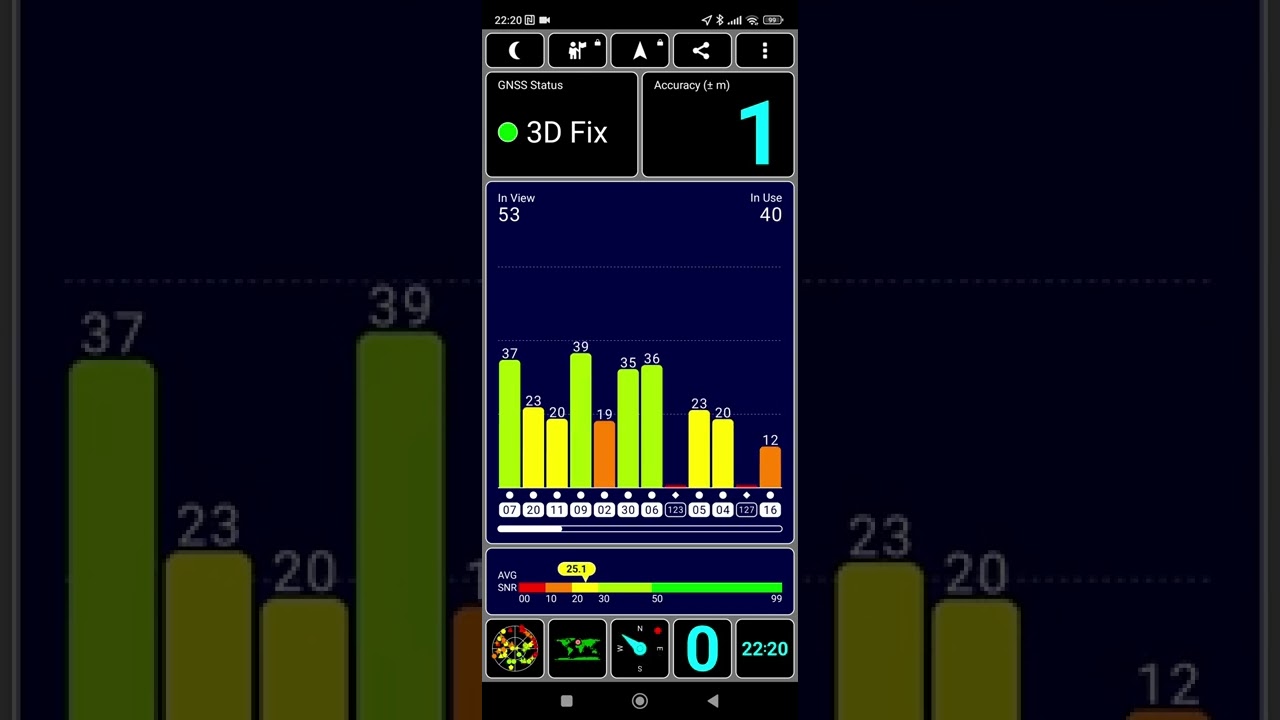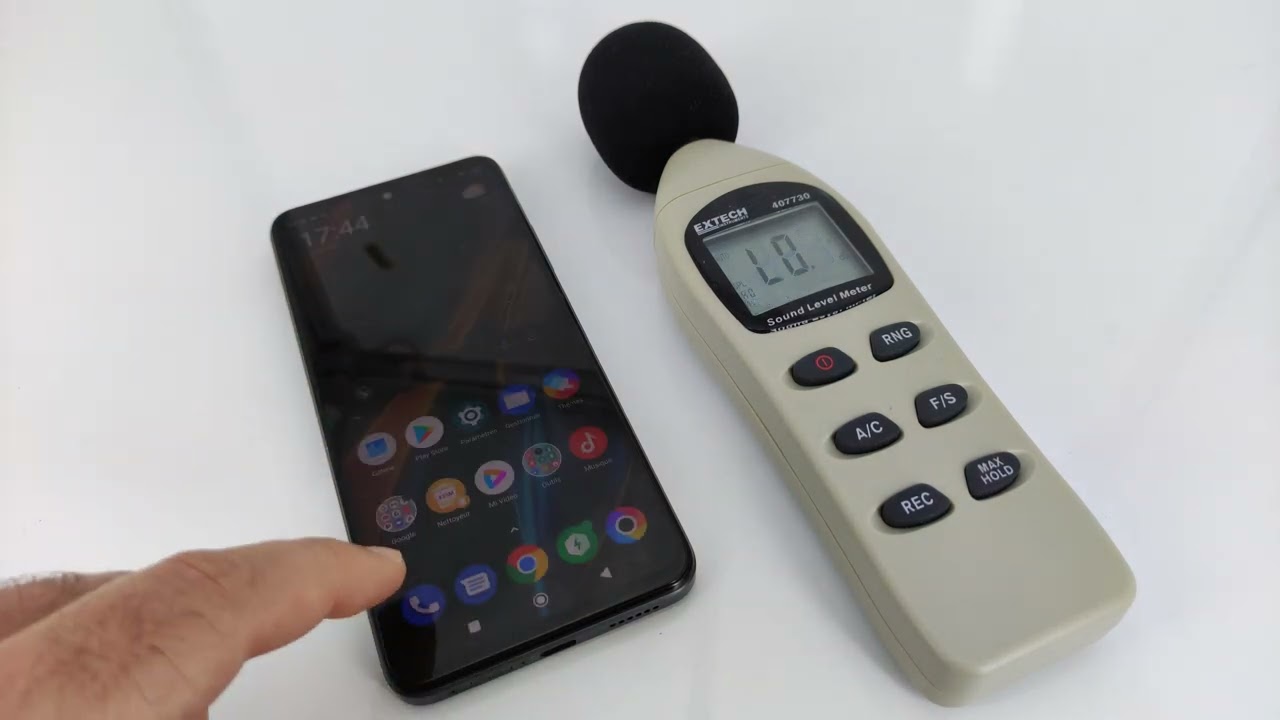Smartphones
Poco X4 GT : test / review
Published on: 23-06-2022 / Modified: 11-12-2022
I thought the production of new phones was going to slow down with the economic crisis we find ourselves in mid 2022 but obviously Poco is not letting itself down and continues to market mid-range phones (and even the upper end of the mid-range ). These phones were obviously designed before the crisis arrived, so the slowdown will surely take place later and we will undoubtedly find ourselves faced with a shortage of models and new products. In the meantime, Poco continues on its pace with this time a supercharged version of its X range with the X4 GT.
The Poco range was still quite simple a year ago with the M for the entry level, the X for the mid-range and the F for the high-end but they have added Pro and GT versions which blur the boundaries between each range. This supposedly mid-range Poco X4 GT is going to hit the performance race with a huge hammer to knock out the competition even more. This will undoubtedly delight gamers, but this phone has other interesting features, so I'm going to discover this one to help you in your choice.
offer
The Poco X4 GT will be available from the official website from 06/27/22 from the following link:Poco X4 GT on Po.co
Manufacturer web site:
https://www.po.co/global/
Site where I have bought the Poco X4 GT:
https://ams-event.po...
Structure of my tests
I test the phones according to a pre-established structure (see below) to provide you with as much information as possible. Unfortunately, this takes a long time. Some tests like network performance tests take several days and for photo tests I sometimes have to wait until the weather is suitable to take pictures in good conditions. I am therefore obliged to publish the tests step by step, so I invite you to come back if the test is not complete at the time of your visit.Price Poco X4 GT
The list below shows the prices for the Poco X4 GT from more than 50 sites around the world. If you are not satisfied with any price, you can subscribe to a price alert to be the first to be notified when the price drops.The above links are affiliate links from companies such as Amazon, Gearbest, Aliexpress,... If you appreciate my work, I would be grateful if you could purchase these products through these links. It costs you absolutely nothing but I get a small commission that allows me to buy the material I test. Thank you very much!
Timeline
June 21, 2022 receipt of the Poco X4 GTJune 23, 2022 official announcement of the Poco X4 GT with commercialization a few days later
Why this phone?
You may no longer need a manual to be able to use smartphones because they can now be used by a very wide audience without encountering major difficulties. On the other hand, the proliferation of models in all segments makes it complicated to choose the phone that will suit you best. Most of the questions I receive show that future buyers are very hesitant between several models and can't make their choice. Don't worry, it's normal, there's really something to get lost in and I hope my test will help you make the best choice. Just keep in mind that the ideal phone probably doesn't exist, so you'll have to choose your priorities.Pocos have often been performance-oriented phones with sometimes a few variations to open up the range to another type of audience. With the GT range, we are returning to pure and hard performance that will allow gamers to exploit every pixel in games. Over time, I still see that these performance-oriented Poco models also find their place among other types of users and that's what makes things more interesting. For example, we do not expect Poco on the photo quality, they have nevertheless made efforts. So I'm curious to see what Poco has in store for us with this new Poco X4 GT.
Unpacking
First configuration
The Poco X4 GT is released with MIUI 13 (Android 12), so the experience is almost exactly the same as every other phone running MIUI. I noticed some differences in the configuration of the Poco with in particular the list of search engines and certain screens which were different.Finish
Specifications
The information below comes from the Device Info HW application. The application provides detailed technical information about the tested phone. The Poco X4 GT runs on an architecture that I haven't tested yet, so it's a real novelty where Poco/Xiaomi have got into the habit of always re-using the same hardware by changing just a few details. I come back to the CPU/GPU part in the next paragraph but I also see other interesting things:
- the audio chipset (mt6895), I've never tested it
- the UFS 3.1 (already on other Pocos but still quite rare)
- GPS (seems to be an old mono band generation but good accuracy)
- 8 Gb of basic ram
- an IPS screen, this is a step back compared to other phones in the range, but the goal was probably to make room for the Poco F4.
- dynamic screen frequency between 30 and 144hz which allows the frequency to be adapted according to needs and therefore to save battery power when not playing.
- extended color coverage for the screen
- re-use of an old Samsung sensor (but luckily it's a good sensor)
- wifi in 866 Mbps
Beyond raw performance, this phone has a few other assets to show off.
CPU / GPU Performance
The Poco X4 GT is the first Poco to use the Mediatek Dimensity 8100 Max CPU, it is a high performance CPU that we find here in a mid-range phone but rather the top of the mid-range. This phone could deliver performance comparable to the Poco F4 GT, hoping that it is able to hold the road in terms of temperatures.
For the graphics part, it relies on a Mali-G610 MC6 and here too we can expect good performance for a mid-range phone.
Benchmark Antutu/3DMark
I obtained a score of 714577 points with Antutu v9, I did not manage to run Antutu v8, the score is therefore not immediately comparable with the other tests I have carried out but this phone is clearly a high performance phone that will allow you to play any game in the highest level of graphics. Who says big performance also says heat and energy consumption, so I also tested the rise in temperature and its energy consumption with a load test.Load test
To test the energy efficiency of a phone I push all its components all the way for several minutes, first sequentially and then pushing everything all the way up at the same time . I observe the real computing power, the ability to keep the phone at a good temperature, the battery consumption. This kind of test also allows you to see if the phone is able to exploit all its power when everything is running at the same time because even if the CPU and the GPU are powerful, when they work together they may not give 100% of their performance. Verdict? My test shows several interesting things.In terms of pure computing power, the X4 GT offers 11% less performance than the F4 GT at the CPU level. If I look at the GPU, the difference is even bigger because the F4 GT offers 29% more performance. The scores seemed similar with Antutu but the reality is different.
With a little less performance, the X4 GT is also less greedy because the CPU consumes an average of 7.2W (against 10.67 on the F4 GT) and the GPU consumes 5.1W against 7.67 on the Poco F4 GT. This also results in a much more contained rise in temperature because over the duration of the test, I obtained an average temperature of 35 degrees where I had an average temperature of 50° on the F4 GT. This phone heats up but much less than the model of the higher range.
The Poco X4 GT therefore offers a very good performance but if you want better there is the Poco F4 GT but this phone costs significantly more, the X4 GT therefore offers a much better performance ratio / price.
Gaming
To test the performance in game, I download the mobile PUBG game and evaluate the in-game experience, graphics level and depth of vision. This game is quite demanding and should help you evaluating the performance of a phone.

Network performance
The Poco X4 GT offers very wide frequency coverage in 3G, 4G and 5G (13 frequencies). So you should be able to use it pretty much anywhere in Europe.Signal 4G (from December 2020)
I decided to change the methodology for measuring the network because I noticed that the configuration of the mobile network changes over time. This makes it more difficult to compare phones because the conditions are no longer exactly the same.
To overcome this problem, I set up a device that captures 24 hours a day about ten parameters from the mobile network (ex: cell id, rssi, rsrq, snr, frequency,...). I then place the phone next to the device for 24 to 48 hours taking the same measurements so that I can compare them.
Overview of the phones tested with this methodology
Download/Upload speed
To test the download speed, I have identified some 4G cells offering good performance where I test all my devices several times to see what download and upload speed they can achieve.
Wifi performance
To test a phone's ability to receive the network properly, I take measurements near my router and then remotely (and always at the same place). This gives me an average in dBm where a value of -90 dBm indicates poorer performance than a value at -30 dBm.Wifi signal
The Poco X4 GT uses a Mediatek MT6895 wifi chipset which is directly linked to the Dimensity 8000 type CPUs. This chip offers a good level of wifi sensitivity because I obtained a signal of -16 dBm near the router and -60 dBm from a distance.
Download/Upload speed
To test the speed in Wifi, I connect to my router in 2.4Ghz and 5Ghz (if available) and use the Ookla application to measure the speed.
GPS performance
To test the accuracy of the GPS signal, I use two positioning applications to evaluate the difference between the actual position and the position indicated by the phone. This test is done outdoors with nothing to obstruct the signal. An accuracy level of up to 3 meters can easily be corrected by an application (e.g. Google Maps).

Battery range
To test battery life I developed an application that measures the battery level minute by minute until the battery is empty. This application consumes about ten percent of the phone's resources and I do a test with 100 brightness. This test aims to reproduce a contemplative use of a phone (e.g. surfing the internet, reading articles, spending time on social networks). These results are not valid for intensive gaming/streaming use.The screen consumes about 1.7W on a gray background and if I fluctuate the default frequency (60 to 144hz), I don't notice any noticeable difference in screen consumption. By doing this same test on other phones, I still notice a difference in consumption of around 30% but not on this Poco X4 GT. I don't know why, the dynamic frequency adaptation mechanism could explain this finding but I'm not sure.
With these results, I estimate that you should be able to last 2 days with a full battery and normal use. If you play a lot this autonomy will decrease sharply to less than a day.
Photo camera test
To test the quality of photos produced by a phone, I do a technical test (resolution, sharpness, chromatic aberration,...) in studio (identical conditions) to evaluate the technical part objectively. From the second half of 2020, I built my own laboratory to take completely objective technical measurements. I then take pictures in real conditions to see how the camera performs. I then evaluate these photos according to my criteria but I publish the photos so that you can evaluate the result according to your criteria.Hardware
The photo has never been the top priority for the Poco brand, but sometimes certain models stand out. This will undoubtedly be the case for this Poco X4 GT because it uses the Samsung S5KGW1 sensor as its main sensor. It is an "old" sensor because I had already tested it on a Redmi Note 8 taken several years ago but at the time it was a very good sensor and it still is today because the quality photos has not changed significantly since that time. I tested it more recently on the TCL 10 Pro and I had obtained good results too, we will see here if the optimization layer of the Poco will improve or deteriorate the quality of the sensor.For the wide angle, Poco has re-used the Omnivision sensor from the Poco M4 Pro.
Photo quality
Photo quality (indoor/studio)
The studio test is carried out under the same conditions so that the results can be compared on an equal basis. I calibrate my lighting for each test to obtain the same brightness and colour temperature. This test is a preliminary analysis of the technical qualities of a camera. Most phones fail this test, so you should also read the results of the other tests in the following paragraphs.
Main sensor: Samsung S5KGW1
Secondary sensor: Omnivision OV16A10
Photo: technical test
I was inspired by industrial technical tests to create my own technical test to evaluate the technical quality of a camera. This test is an objective assessment of a camera's ability to render a scene correctly.
I test the following elements:
- centre sharpness, peripheral sharpness
- colour fidelity based on 24 reference colours
- level of chromatic aberration
- dynamic range (ability to capture dark and light areas without loss)
- distortion
The technical evaluation may differ from the subjective evaluation as the feeling of a photo will be influenced by the processing provided by each manufacturer.
Main sensor: Samsung S5KGW1
Secondary sensor: Omnivision OV16A10
Outdoor photo quality
Main sensor: Samsung S5KGW1
Secondary sensor: Samsung S5k4h7
Test photo / night
Not yet available / tested
Video quality
Stabilisation

Video normale conditions

Video low light
Not yet available / tested
External audio quality
This test is intended to give you an overview of the volume and sound quality during calls and when listening to music through the external speakers.

External speakers deliver decent quality sound, this phone hasn't gotten the special treatment from Poco, it's the same kind of quality as on the other phones in the range. The low frequencies lack a bit of depth and the highs are sometimes too forced, but that's often the case for this type of phone.
Audio quality (headphones)
To test the quality of the phone's audio output, I connect the device's audio output to a measuring tool, then play sounds on all frequencies and measure the differences between the original sound and the sound produced by the phone. In this way I measure the phone's ability to correctly reproduce all sounds.Subjective listening by ear isn't going to reveal any big problems, you really have to be very attentive to notice a difference and you would also need to be able to listen to high quality music on another device. high quality to start hearing differences.
Screen quality
To test the screen, I use a colorimetric probe that measures the color accuracy of a screen, as well as other parameters to see if a screen is able to correctly reproduce an image. I also test the brightness level to determine if the screen will be able to display an image in full sunlight.Colorimetry
The display is frequency adaptive, that means it can change the frequency depending on what you are using it for. When you read an article, the frequency will decrease to preserve the battery but when you play a game, the frequency will increase up to 144hz to ensure perfect fluidity. You no longer have to choose the frequency yourself and no longer have to sacrifice battery life to achieve smooth screen movement.
Brightness / Contrast
I measured a brightness of 500 cd/m² with the sun mode activated, it's a good score which will allow you to use the screen under the sun but other phones do better to ensure perfect readability in the open. Sun.
I measured a contrast ratio of 1200:1, it's not a very high contrast and it's a shame because it directly affects your viewing experience with this screen. With an AMOLED screen, the problem would not have arisen. Other than protecting the high end, I don't see why Poco used an IPS on this phone. When I tilt the phone, the blacks (which aren't quite black) quickly turn gray.
Biometry
Not yet available / testedOperating system
Not yet available / tested
Encoutered bugs
Not yet available / testedAccessories Poco X4 GT
Compare Poco X4 GT with the others
Test / Review conclusion
The Poco X4 GT ranks almost naturally above the other Pocos in the X range, but it does not do so on the criteria I expected. The Poco X4 GT keeps its promises in terms of performance, it even exceeds the Poco F4 in pure performance and the difference with a Poco F4 GT is not huge (even if it exists). On the other hand, I was not expecting this phone in photo territory because it is not Poco's usual playground, but by bringing out the old Samsung GW1, Poco made a good choice here for photo quality. This sensor has been around for a few years but it can still stand the comparison with more recent sensors, it is able to deliver very good photos when the light conditions are good.
I can't just pass on the performance and just write that this phone offers a good performance because beyond the numbers, there are other interesting elements. Since I measure the individual consumption of each component I notice significant differences between the phones tested. I note in particular that this phone has a good energy performance, the consumption in Watts compared to the power ranks it in the good students. I also see that when pushed to the maximum, the performance loss exists but is much less significant than with a Poco F4 GT which cannot manage the full power of its CPU at the same time as its GPU. The battery temperature is one of the other strong elements of the phone because with an average of 32°C at full charge, the phone heats up much less than a Poco F4 GT which rises to more than 50°C. Less performance than an F4 GT yes but more efficient therefore!
There are still other areas in which this Poco manages to stand out. I am thinking in particular of memory access in UFS 3.1 which offers fast access to memory which results in a shorter application loading time and a smoother transition from one application to another. WiFi sensitivity is also above average, network sensitivity is just average.
This phone has a lot of strengths but also has some weaknesses. I'm thinking in particular of the choice of screen, Poco used an IPS screen where we usually find an AMOLED screen and that's a shame. The contrast of the screen is quite low and even if the colorimetry is correct (in standard mode), an amoled screen offers a better experience. This phone should also sound good and I didn't notice any noticeable improvement over the rest of the range, I even measured deviations at some frequencies. The sound is good but not at the level of other phones in this price range. The use of an old photo sensor brings another weakness in terms of stabilization because even if the photo quality is good, the video stabilization is not at the level of today's phones.
I was positively surprised by this Poco X4 GT because despite some weaknesses, this phone will find its place in the mid-range and offer an alternative to all the Redmi range. The design moves a little away from the gaming side without dropping the performance, the photo has improved, the energy management is good and in the end this phone should be able to appeal to a very large audience.
Strengths
Not yet available / tested
Weaknesses
Not yet available / tested
Alternatives to this product
Not yet available / tested
 LAURENT WILLEN
LAURENT WILLENHead of myself on this blog
I share my passions on my blog in my free time since 2006, I prefer that to watching nonsense on TV or on social networks. I work alone, I am undoubtedly one of the last survivors of the world of blogs and personal sites.
My speciality? Digital in all its forms. I have spent the last 25 years working for multinationals where I managed digital teams and generated revenues of over €500 million per year. I have expertise in telecoms, media, aviation, travel and tourism.












































Questions/Comments